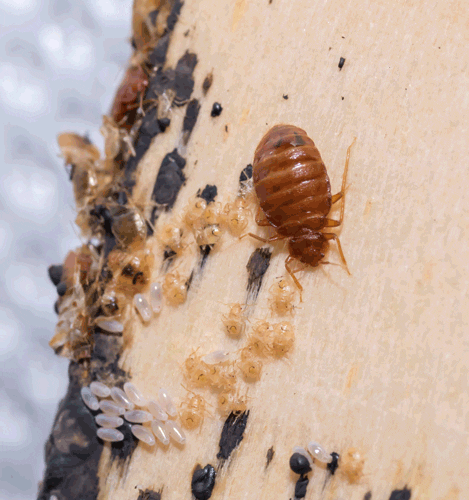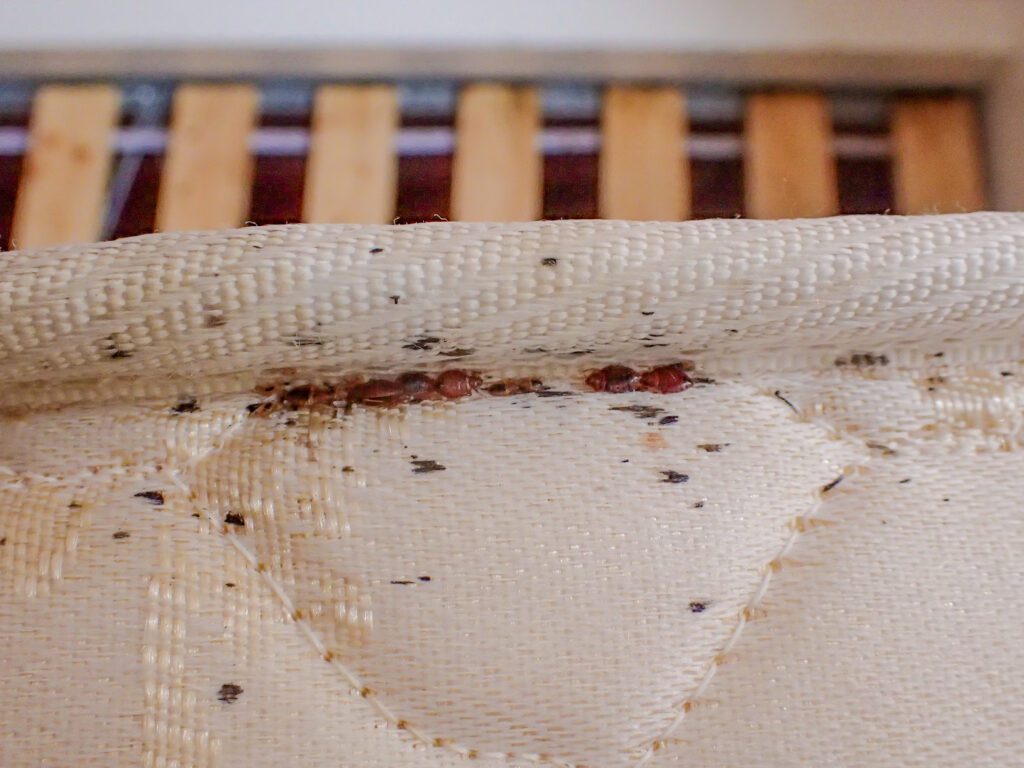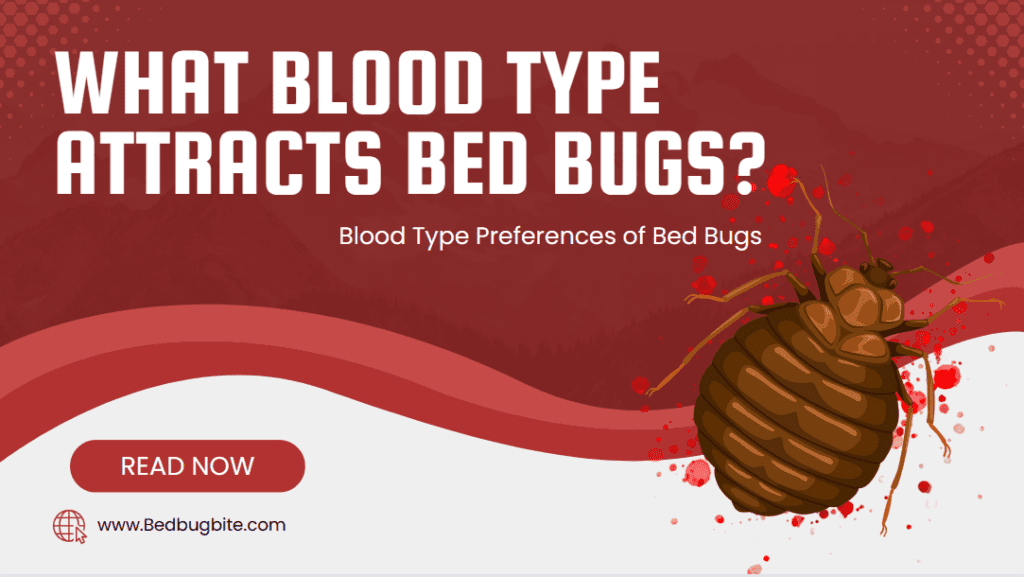The Intriguing Question: What blood type attracts bed bugs?
When it comes to bed bugs, numerous questions may arise, but one stands out in particular: What Blood Type Attracts Bed Bugs? This seemingly simple query can lead to a fascinating exploration of the biology and behavior of these notorious pests. Bed bugs, scientifically known as Cimex lectularius, are known for their relentless pursuit of human blood, but does their choice hinge on a specific blood type?
The Importance of Understanding Bed Bugs’ Feeding Preferences:
Understanding bed bugs’ feeding preferences is not merely an academic curiosity; it has profound implications for individuals and communities alike. An insight into their preferences can lead to targeted control measures, more effective treatments, and a deeper comprehension of how to prevent infestations. From households to hotels, the more we understand bed bugs, the better we can protect ourselves.
Overview of What to Expect in the Article:
In this comprehensive guide, we will delve into the science behind bed bugs’ feeding habits, exploring whether they have preferences for specific blood types. By analyzing studies and debunking prevailing myths, we will uncover the truth and equip you with knowledge that can help in handling bed bug issues. Whether you’ve faced a bed bug infestation before or simply want to be prepared, this article will serve as a valuable resource.
Understanding Bed Bugs
Physical Features and General Behavior

Bed bugs are small, flat, oval-shaped insects that are typically reddish-brown in color. They are wingless creatures that move quickly across floors, walls, and ceilings. Adult bed bugs measure about 5-7 millimeters in length, while their nymphs are smaller. Their distinct physical appearance is crucial to identifying an infestation, as is understanding their nocturnal behavior and tendency to hide during the day.
The Feeding Habits of Bed Bugs
Feeding primarily on human blood, bed bugs use their specialized mouthparts to pierce the skin and withdraw blood. Unlike mosquitoes, they are not known to transmit diseases but can cause itching, redness, and discomfort. Bed bugs feed every 5 to 10 days and are particularly active during the night when humans are asleep. Interestingly, their feeding habits are not confined to humans; they may also feed on animals like cats and dogs.
Common Places Where Bed Bugs Are Found
Bed bugs are remarkably adaptable and can be found in various environments. While they are most associated with beds and bedrooms, they also inhabit furniture, cracks in walls, and even electronic appliances. Hotels, dormitories, apartments, and public transportation are frequent hotspots for bed bug infestations. A study conducted by the University of Kentucky reveals that bed bug infestations have been increasing worldwide, emphasizing the importance of awareness and vigilance.
The Science of Bed Bugs’ Blood Feeding: How Bed Bugs Locate Their Host
Bed bugs have an uncanny ability to locate their hosts, even in darkness. They are guided by the carbon dioxide emitted by breathing, body heat, and natural body odors. These sensory cues guide them to their next meal, allowing them to navigate towards sleeping humans with remarkable accuracy. Sophisticated antennae and other sensory organs play a crucial role in this, making their host-seeking behavior a fascinating subject of study.
The Process of Feeding: How They Pierce the Skin
The feeding process of bed bugs is equally intriguing. They use a specialized mouthpart called a proboscis to pierce the skin and access blood vessels. This needle-like structure is inserted into the skin, and through it, they draw blood for about 5 to 10 minutes. Remarkably, their saliva contains anesthetics that numb the skin, making their bite nearly undetectable at the moment it occurs. This stealthy feeding mechanism is part of what makes bed bugs such a persistent and challenging pest to deal with.
The Aftermath of a Bed Bug Bite
After a bed bug has been fed, the after effects can vary widely among individuals. Some may experience minor itching and redness, while others may have more pronounced allergic reactions. The bites often appear in a line or cluster and can become inflamed or infected if scratched excessively.
Do Bed Bugs Prefer Specific Blood Types? Analyzing Scientific Studies on Blood Type Preferences
The notion that bed bugs may prefer certain blood types over others has been a topic of interest and debate. To arrive at a definitive conclusion, we must turn to science. A comprehensive review of available research, including studies conducted by reputable institutions such as the Entomological Society of America, reveals no concrete evidence to suggest that bed bugs prefer one blood type over another. The studies found that bed bugs are opportunistic feeders, focusing on accessibility rather than blood type.
Debunking Myths Surrounding Bed Bugs’ Blood Type Choices
Various myths and misconceptions surround the notion of bed bugs’ preference for specific blood types. Some claim that people with Type O blood are more susceptible, while others argue the opposite. However, these assertions lack scientific backing and are likely based on anecdotal evidence rather than rigorous research. By debunking these myths, we can focus on information and practical measures to address bed bug issues.

Considering the scientific evidence, it becomes clear that bed bugs do not have a favorite blood type. Rather, they are guided by other factors such as body heat, carbon dioxide, and scent. Understanding this fact is vital not only for individual peace of mind but also for implementing effective bed bug control strategies. The knowledge that bed bugs do not discriminate based on blood type equips us with a more accurate perspective and aids in devising targeted solutions to prevent and combat infestations.
Preventative Measures: How to Keep Bed Bugs at Bay
Understanding that bed bugs are not drawn to specific blood types but rather to factors like body heat and carbon dioxide opens the door to practical preventative measures. Regular inspection of living spaces, proper sanitation, the use of mattress covers, and vigilance while traveling can help keep these pests at bay. Information from the Centers for Disease Control and Prevention provides detailed guidelines on preventing bed bug infestations, aligning with the insights gained from our exploration of their feeding habits.
Control Strategies: Targeted Approaches to Handling Infestations
Knowledge about bed bugs’ feeding preferences informs targeted control strategies. Recognizing that bed bugs are opportunistic rather than selective feeders allow for the development of more effective treatments. Employing professional extermination services, using approved insecticides, and following proper guidelines for washing and heating affected items can lead to successful eradication. The absence of preference for blood types reinforces the need for a comprehensive and fact-based approach to control.
Empowering Individuals and Communities: A Knowledge-Based Approach
The understanding that bed bugs do not prefer specific blood types is not just a scientific curiosity; it empowers individuals and communities with accurate information. Dispelling myths and focusing on evidence-based prevention and control strategies fosters a more informed and proactive stance against bed bugs. This approach translates into healthier living environments and contributes to the collective effort to manage and reduce bed bug infestations.
Bed Bug Bites and Health Considerations
Understanding the Impact of Bed Bug Bites on Different Blood Types
Although bed bugs don’t discriminate among blood types, the reaction to their bites may vary among individuals. Factors like skin sensitivity, allergic reactions, and underlying health conditions can influence the body’s response. It’s essential to recognize that while the blood type isn’t a factor in attracting bed bugs, individual reactions to bites may differ.
Medical Treatments and Home Remedies for Bed Bug Bites

Dealing with bed bug bites involves understanding both medical and home-based treatments. Over-the-counter creams containing hydrocortisone can alleviate itching and inflammation. Simple home remedies like applying cold compresses or a mixture of baking soda and water may also provide relief.
While most bed bug bites can be treated at home, some instances require professional medical intervention. Symptoms such as persistent itching, swelling, signs of infection, or an allergic reaction necessitate a visit to a healthcare provider. Recognizing when home remedies are not sufficient and seeking timely medical help can prevent complications and ensure proper healing.
Case Studies and Real-life Scenarios
Insights from Professionals in Bed Bug Extermination
Learning from the experts in bed bug extermination can provide invaluable insights into effective strategies. Professionals use a combination of heat treatments, insecticides, and constant monitoring to ensure complete eradication.
Stories from Individuals Who Have Experienced Bed Bug Infestations
Personal experiences with bed bugs can shed light on the emotional and physical toll they may take. Here are some anonymized accounts:
- Case A: A family vacation turned into a nightmare as bed bugs were discovered in their hotel room. Prompt action and professional intervention saved their home from infestation.
- Case B: A college student, unaware of bed bugs, suffered for weeks before identifying the problem. Education and prevention methods helped them become bed bug-free.
Lessons Learned and Practical Advice
From the stories and professional insights, we can derive several key lessons:
- Early Detection: Recognizing signs of bed bugs early can prevent extensive infestation.
- Professional Guidance: Sometimes DIY methods aren’t enough, and professional intervention becomes necessary.
- Education and Awareness: Understanding that bed bugs are not attracted to specific blood types and being aware of prevention methods can save unnecessary distress.
Summary of Key Findings: Do Bed Bugs Really Have a Favorite Blood Type?
Through this comprehensive examination of bed bugs, their biology, feeding habits, and the myths surrounding their preferences for blood types, we have established a clear understanding. Scientific studies reveal that bed bugs do not have a favorite blood type, debunking common misconceptions. Instead, factors such as location, host availability, and individual reactions to bites play a more significant role.
Reinforcing the Importance of Knowledge and Preparedness
Understanding bed bugs’ true nature is more than an intriguing subject; it is an essential guide for prevention, control, and effective treatment of infestations. The insights shared by professionals, coupled with practical tips and real-life scenarios, equip readers with actionable knowledge. This understanding promotes awareness and empowers individuals to take proactive measures to deal with bed bugs, whether at home, during travel, or in other environments.
Encouraging Engagement: Inviting Reader Comments and Questions
We welcome readers to share their thoughts, experiences, or questions regarding bed bugs in the comments section below. By fostering a community of learning and support, we can collectively enhance our understanding and ability to deal with bed bugs.




